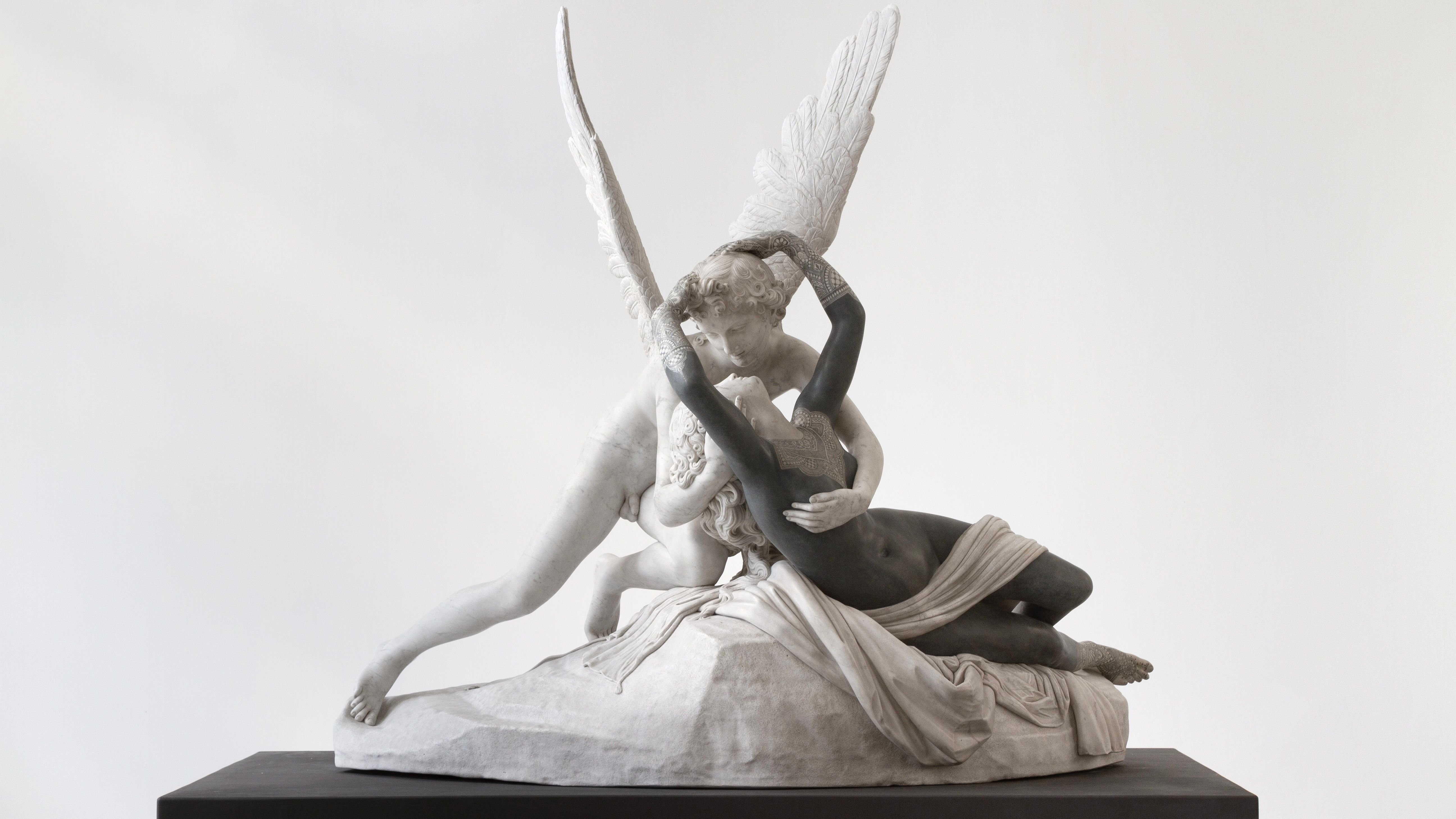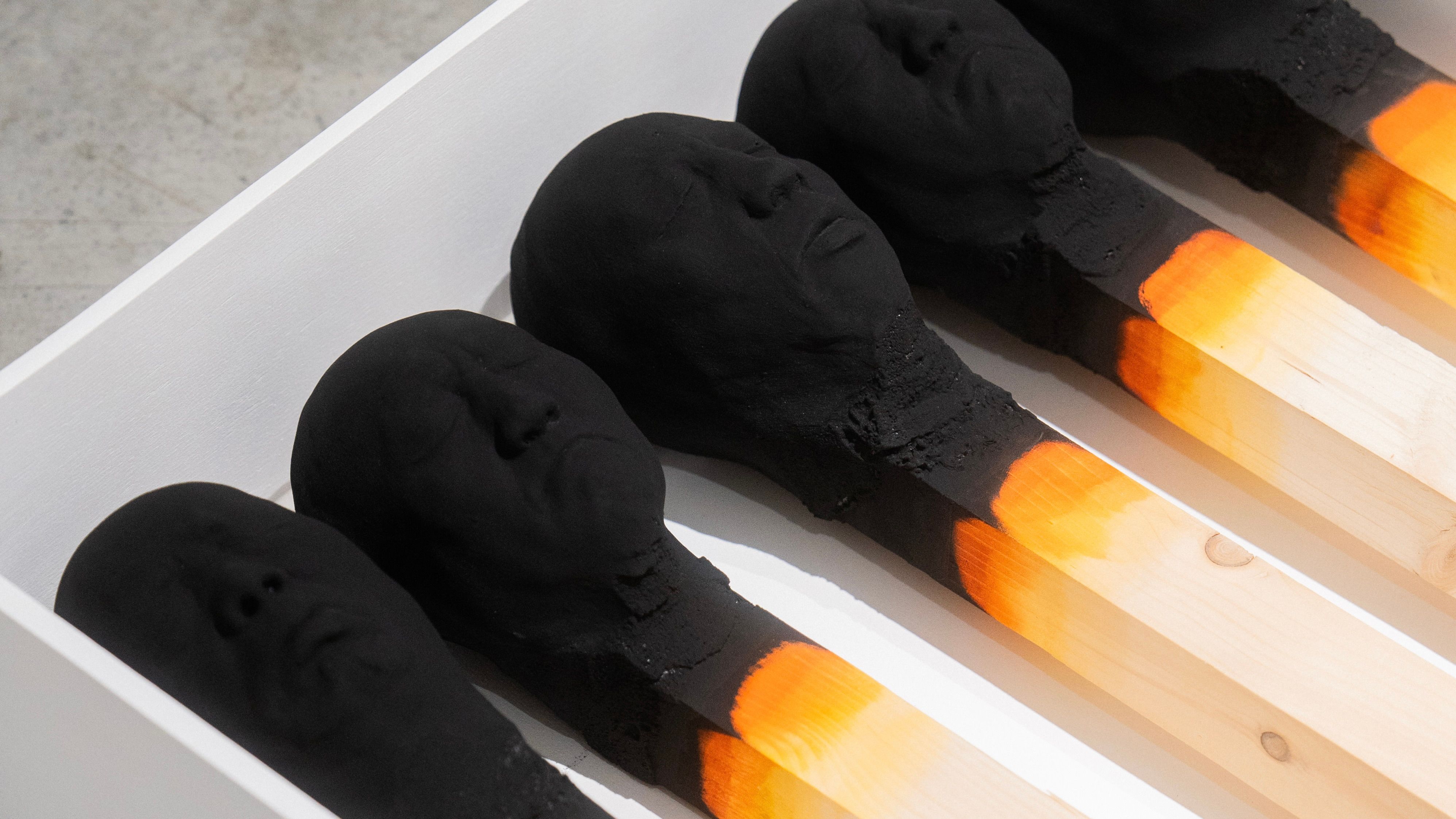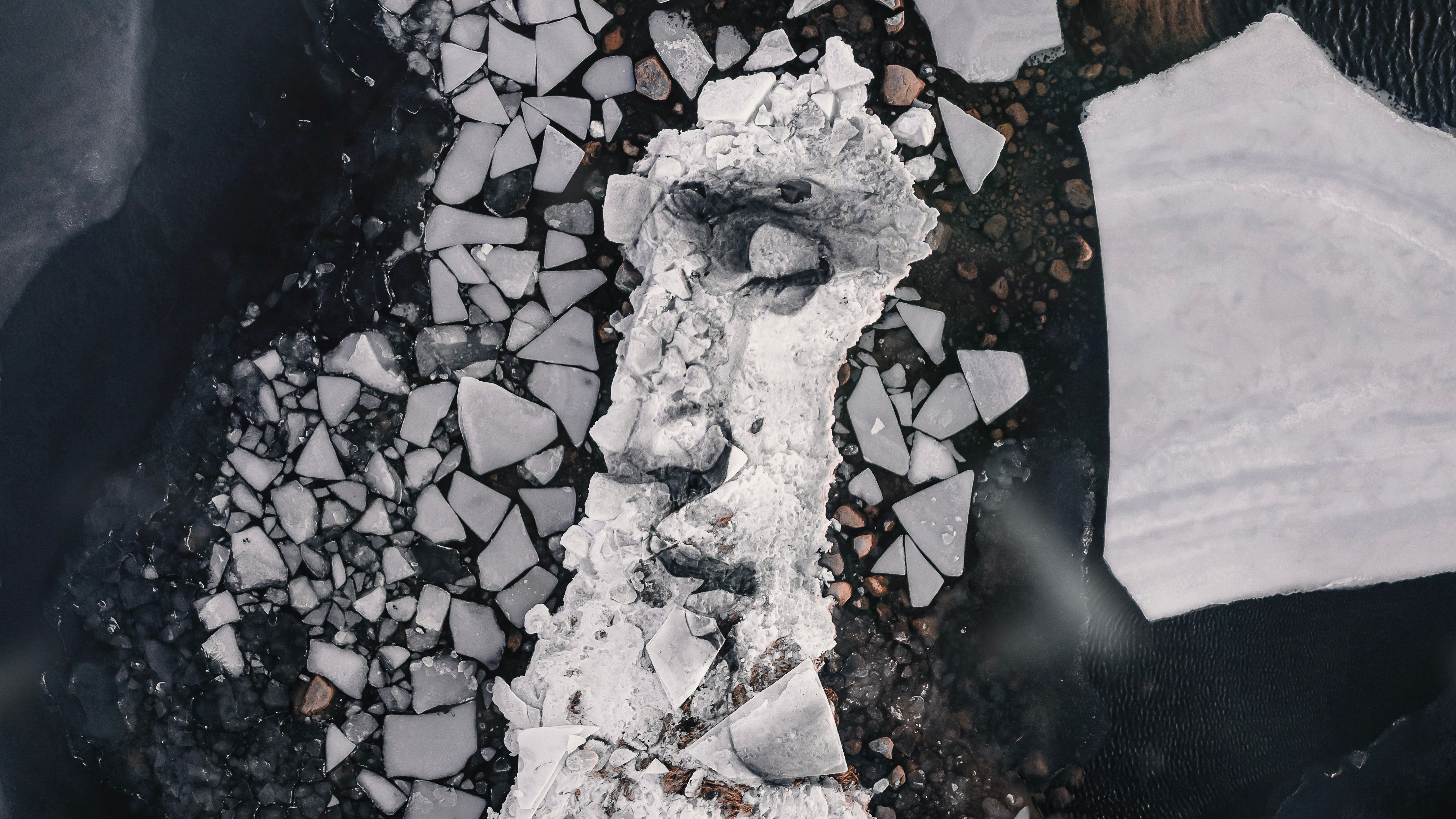Provocative, transformative, and evocative—these three words encapsulate the essence of Fabio Viale's artistic journey. A modern sculptor whose mastery over marble redefines the boundaries of classical and contemporary art, Viale's works provoke thought, transform perceptions, and evoke deep emotional responses. In this exclusive interview, we delve into the mind of Fabio Viale to explore the moments that ignited his passion for sculpture, his meticulous creative process, and the profound contrasts that characterize his art. From the tactile inception of his pieces to their provocative integration of tattoo art, Viale offers us a window into the soul of an artist unafraid to challenge conventions and evoke visceral reactions.
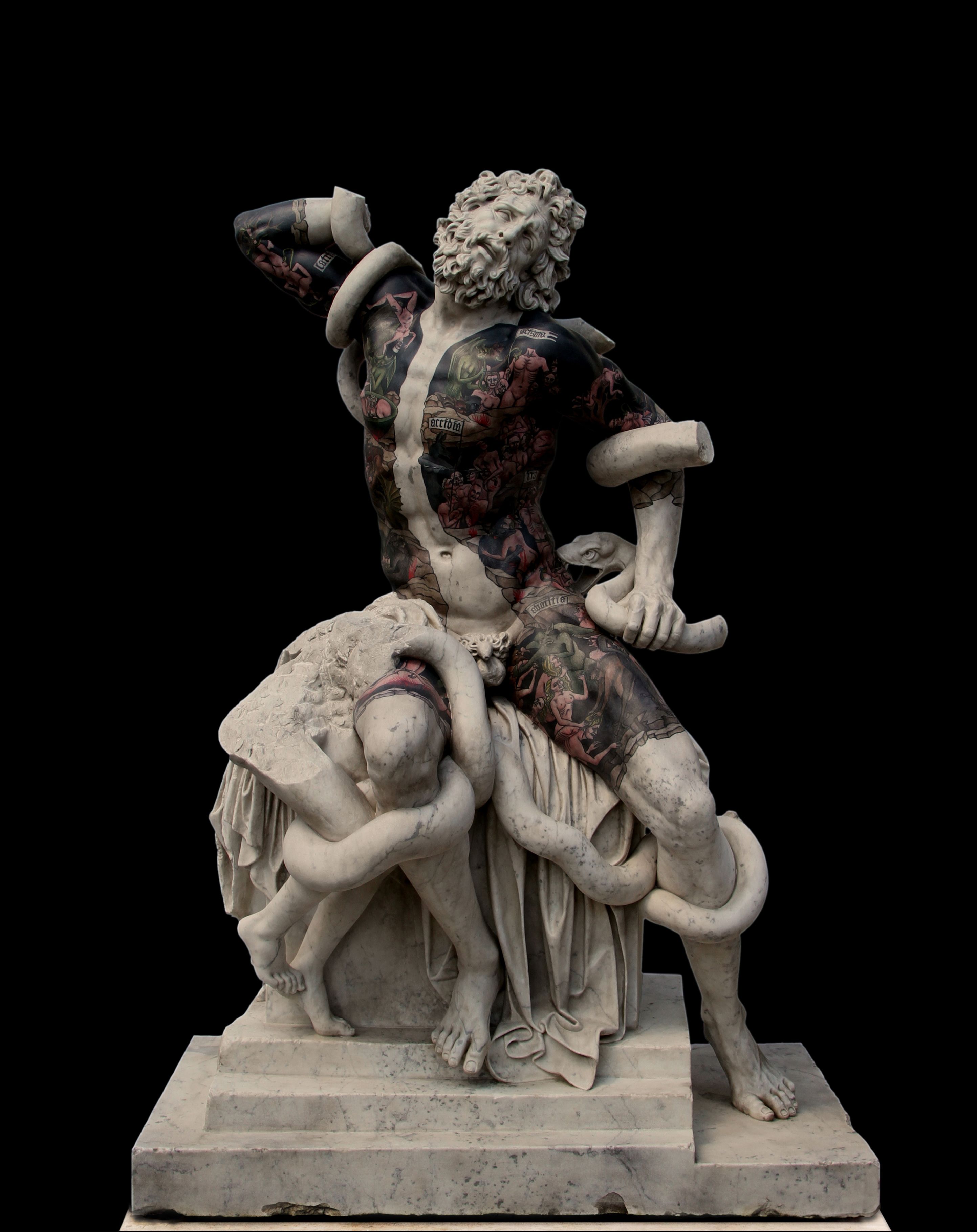
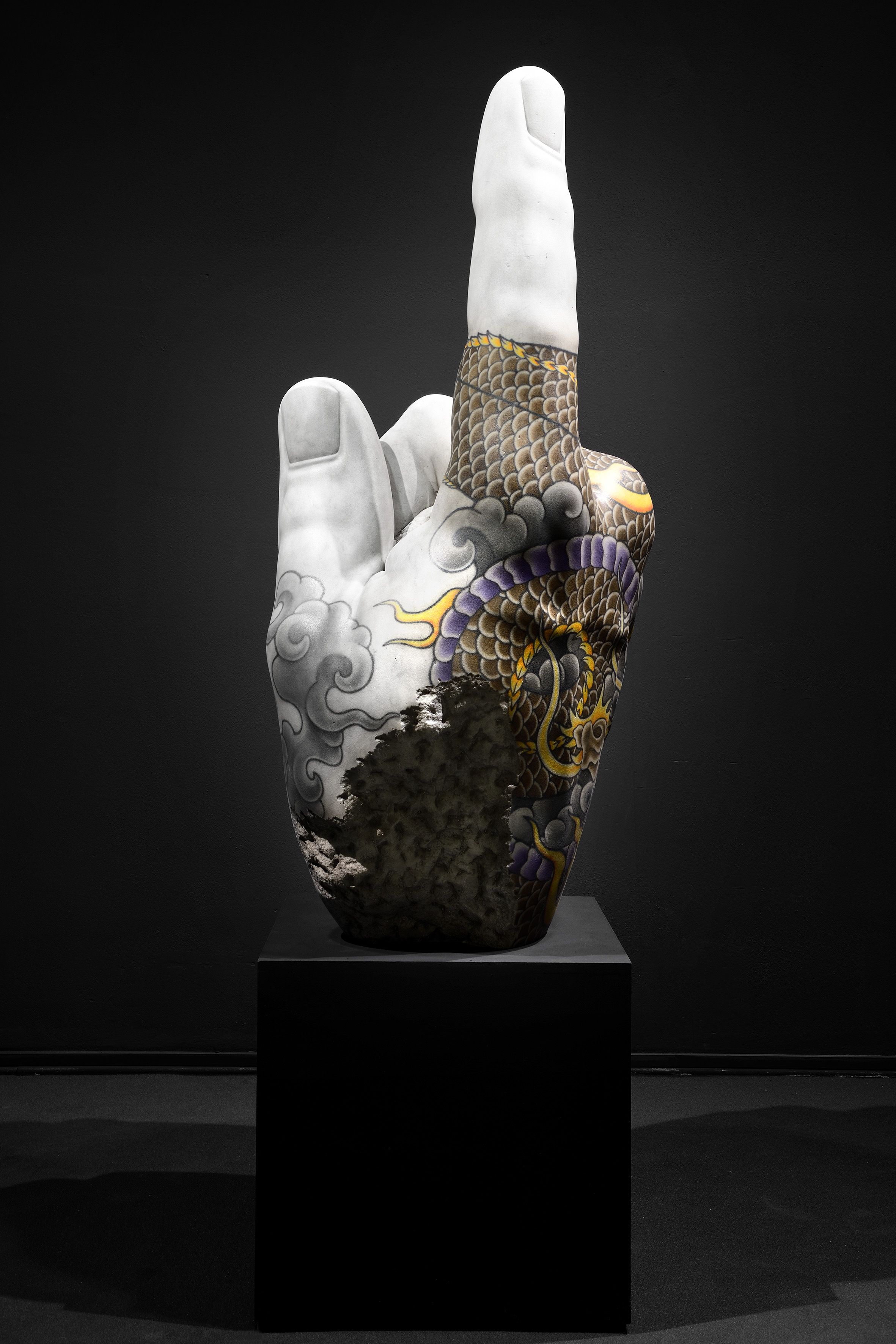
Fabio, Could you share with us the pivotal moment that led you to become a sculptor and immerse yourself in working with marble?
My passion for marble began at the age of sixteen, while attending Art School, where my teacher noticed my adeptness in clay modelling and my ability to visualize forms in 3D. It seemed I had a natural gift. One day, he brought me a dark stone, weathered and aged, and said, "Fabio, now work on this block of marble." Armed with a mallet and chisel, I struck the first blow, revealing a sparkling white chip. I was exhilarated and began to sculpt. After a month, I completed the piece, and my teacher, observing the work, told me that I would become a sculptor when I grew up.
Could you discuss your approach to the creative process, from the conception of a work to its physical realization? Do you also consider the emotional impact that the work might have on the audience during this process?
Firstly, I begin with an image that I try to crystalize in my mind. Then, I approach it technically, seeking to understand all the challenges, timelines, costs, etc. Subsequently, I travel 300 kilometers to select the marble block based on specific characteristics. The choice of marble block is a pivotal step; understanding the quarries and materials is analytical. Each quarry has precise characteristics that encompass not only the marble's colour but also, and above all, its grain, compactness, luster, defects, etc. Every sculpture I create has a specific type of marble that I choose directly by visiting the quarry in Carrara each time. The execution process is entrusted to my collaborators. During the day, I oversee the finishing touches and coordinate the various processes. Regarding the creative impact, many sculptures are born precisely with this intent: to evoke a reaction from the audience. Often, predicting this impact is challenging. Many works arise from a doubt that I enjoy testing through their realization.
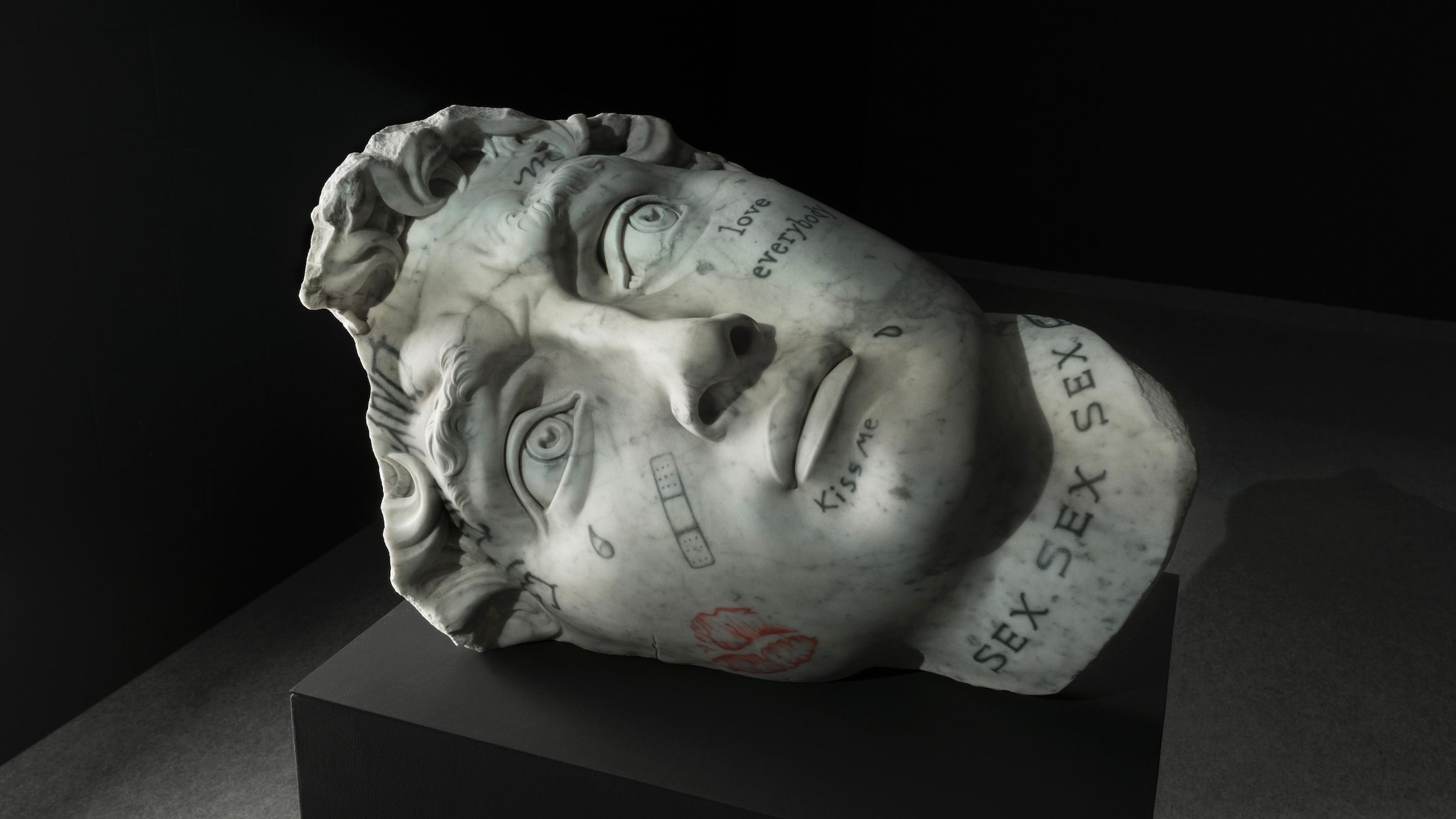
Have you ever found yourself questioning your creative decisions while working on your marble sculptures?
At times, I have experienced them afterwards. When I begin crafting a marble piece, it represents a significant investment of both time and resources. The act of creation is essentially bringing to life the vivid image that initially took shape in my mind.
In your works, we observe a fascinating contrast between the classical beauty of sculpture and the provocative energy of tattoos. When did you first conceive the idea of integrating tattoos into your sculptures? Are you aiming to express a personal meaning or life philosophy through this union?
The journey began many years ago when I met a tattoo artist whose hands were completely inked. He introduced me to the world of Russian criminal tattoos, rich with symbols like crosses and guns, steeped in history. I found that this aspect could add depth to my work. When I decided to tattoo marble, I realised it was paramount not to apply paint but to allow the colours to seep into the stone's natural porosity. My aim was for marble to resemble skin, with tattoos enhancing this transformative effect. I believe a compelling aspect of this endeavour lies in its ability to create a temporal bridge with the past. The contemporary obsession with body art echoes the reverence for beauty seen in classical statuary.
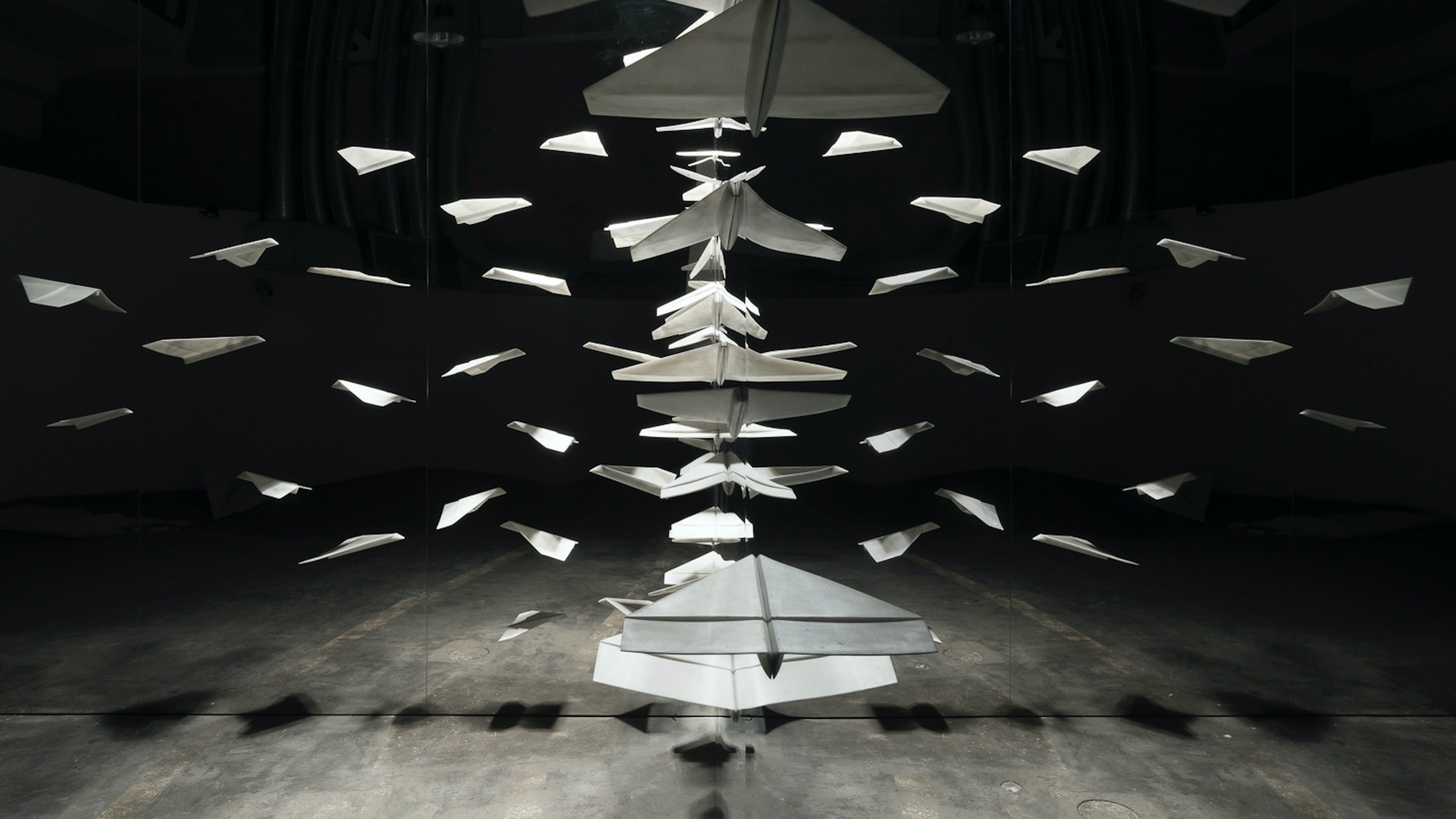
Is there a work among those you've created that holds a strong emotional bond for you, and another that you feel best embodies the concept of 'Out of the box'?
Among my creations, Aghalla, the marble boat from 2002, is undoubtedly the piece that pushed me beyond boundaries, while my interpretation of the Barberini Faun resembling Rocco Siffredi, crafted in 2020, is unquestionably the most unconventional work I've undertaken thus far. The sculpture was intended to depict a sexual involving a woman. Rocco Siffredi made a film based on this work. The ultimate aim was to transcend the boundaries between pornography, eroticism, and art.
Your artistic work often evokes contrasting reactions. How do you handle and interpret negative comments or criticism, and how do they influence your artistic vision and practice?
When someone reacts negatively or aggressively, it's because something has evidently hurt them deeply. This fuels my Thanatos and gives me pleasure. It leads me to conclude that I may not be a likeable person, yet I also feel impervious to criticism…
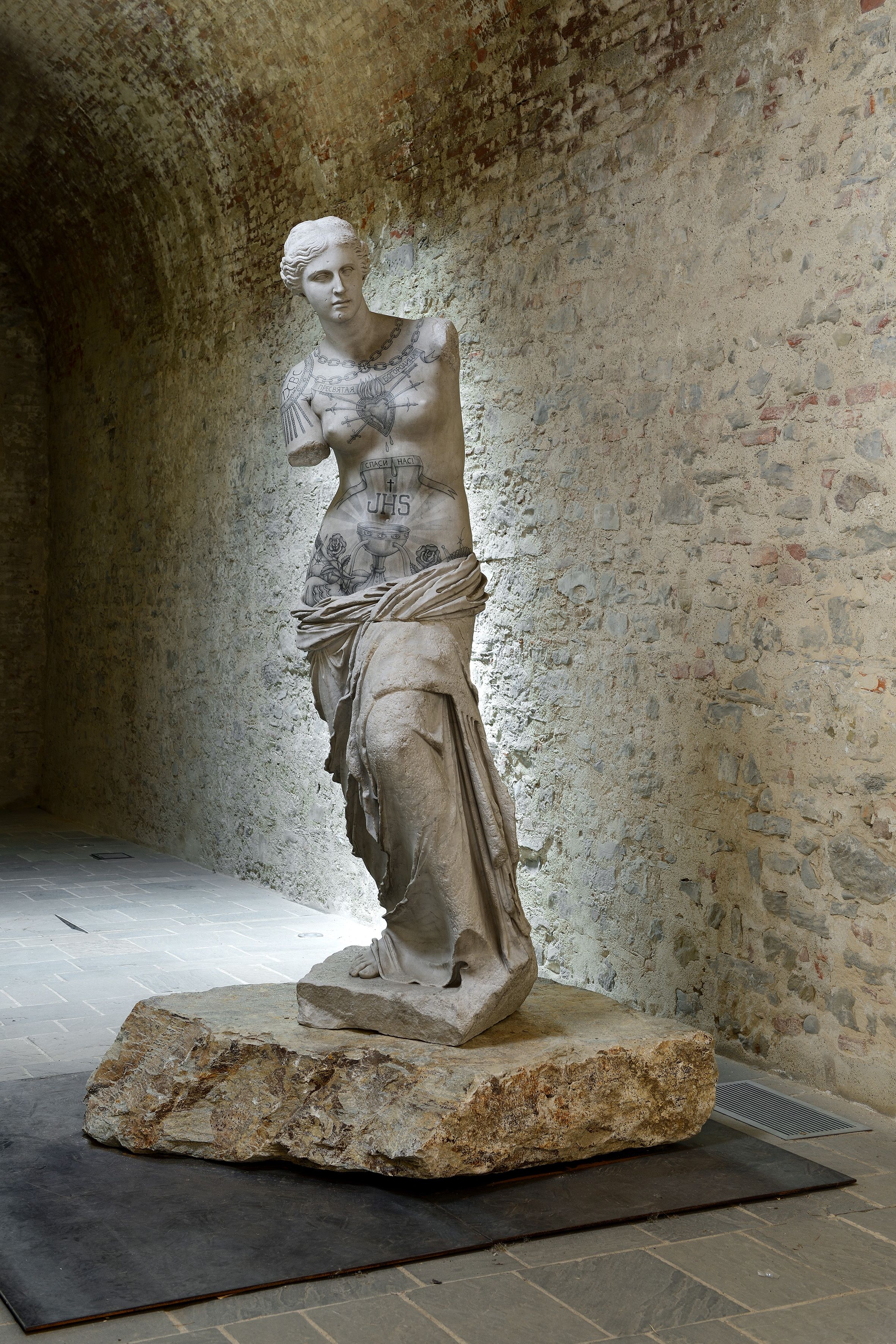
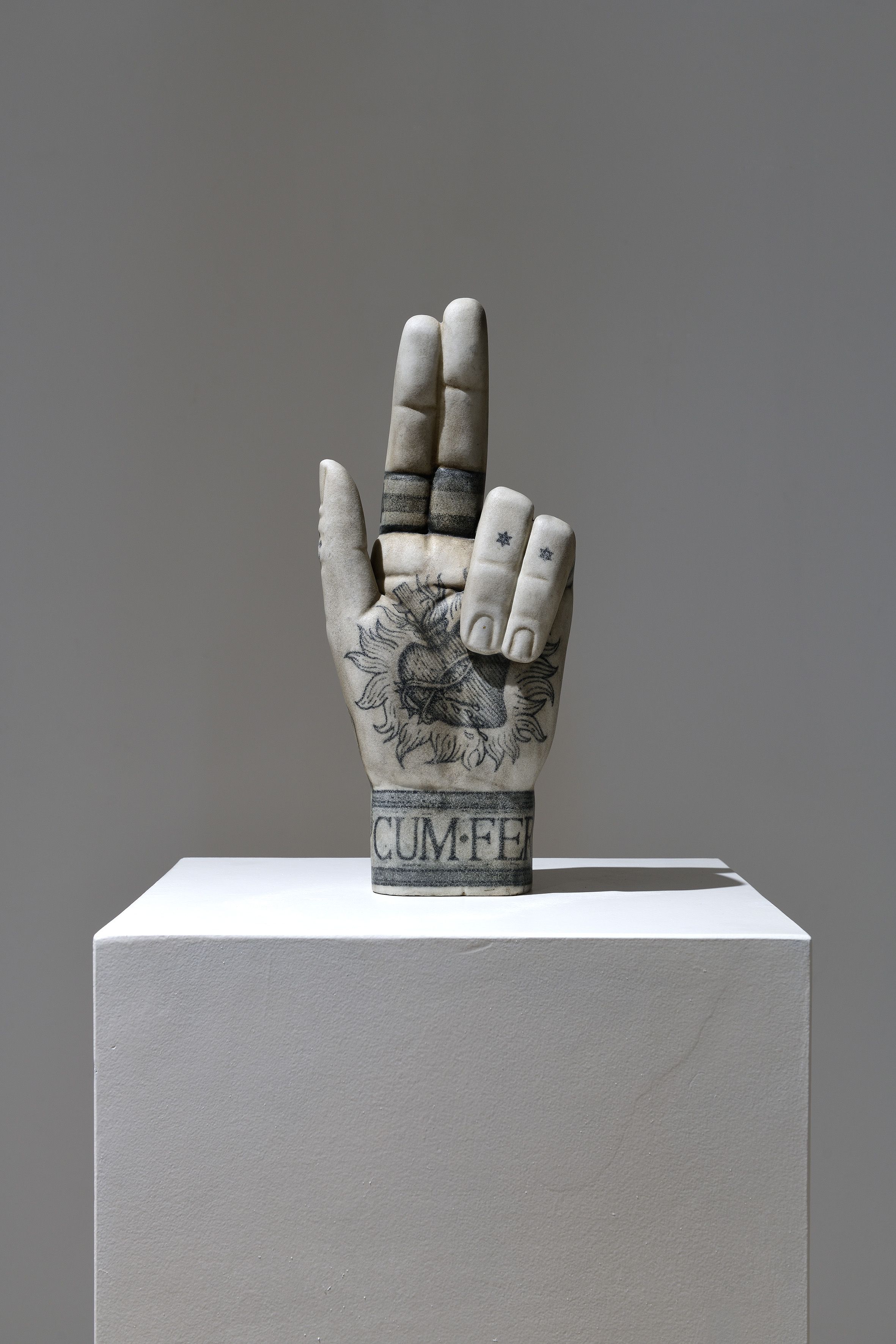
If your younger self could speak to you now, what do you think he would say about the path you've taken so far?
He would likely compliment me and perhaps suggest pursuing photography or architecture…
The artwork 'Aghalla' holds a distinctive place in your artistic portfolio. Could you delve into the inspiration behind this project and the messages you aimed to convey through it?
Conceived two decades ago, the inspiration for this piece stemmed from the definition of marble found in an encyclopedia: "the sedimentation of hundreds of tons of shells at the bottom of the sea," which through metamorphosis crystallized into marble. My idea was to return this material to its origin: after experimenting with a shell I had crafted to float, I approached a naval engineer friend to inquire about constructing a boat. He confirmed it was feasible, provided it was extremely lightweight with thin walls. The engine posed the only uncertainty, as its vibrations could potentially damage the hull. It was only when I launched the boat and started the engine that I fully appreciated the project's feasibility. From that moment, I realized sculpture alone couldn't satisfy me. I immediately sought to evolve the work and its narrative into something more dynamic. I began to integrate performance art, treating it as a form of theatrical staging, but more importantly, as a validation of my initial vision.
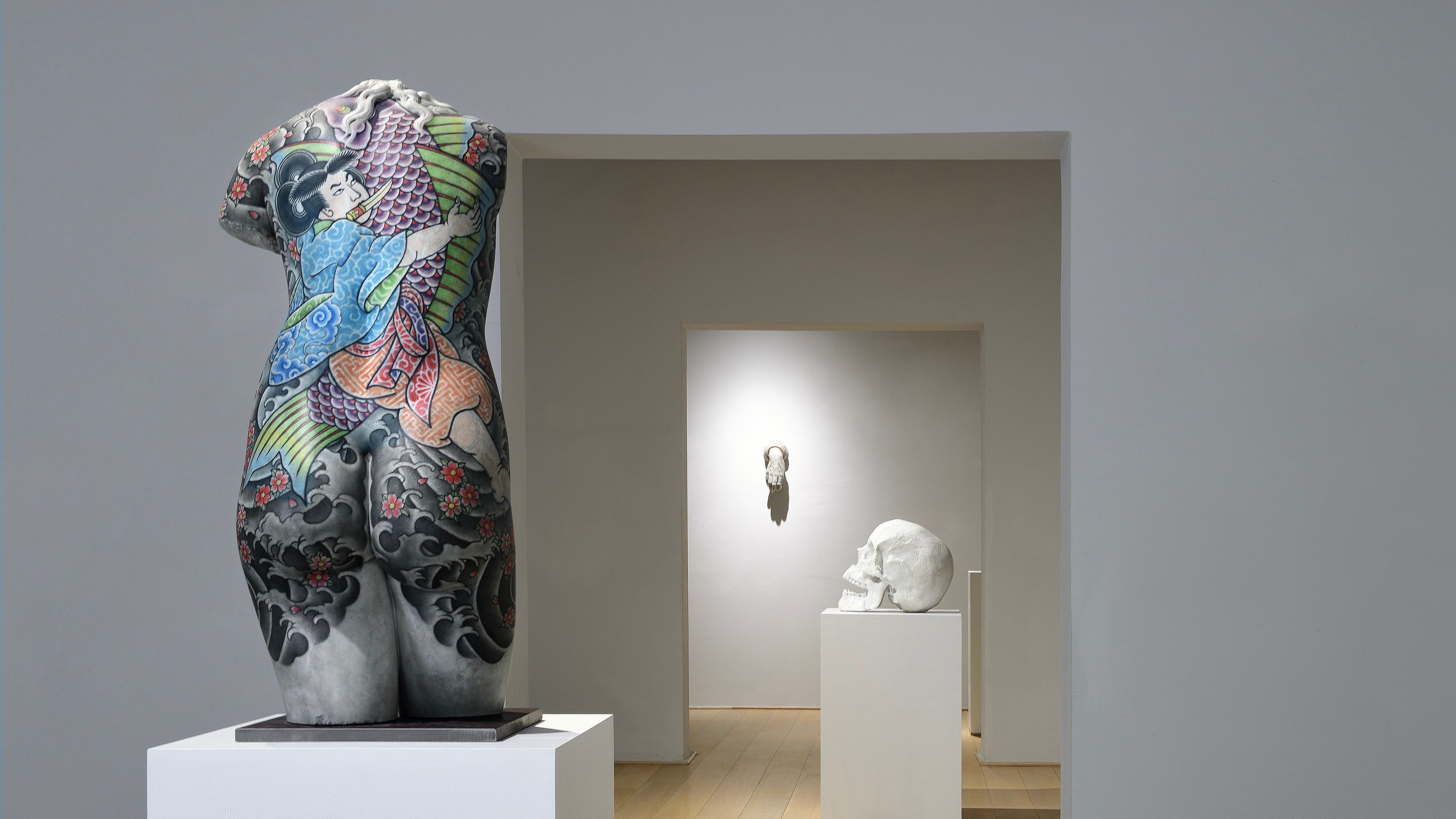
What is your relationship with solitude and silence during the creative process?
I have spent a lifetime with headphones on, shielding myself from noise. When I step into my studio and put them on, it's like making the sign of the cross: I enter my own realm, distancing myself from everything around me. In that limbo, time flows differently, and perhaps thoughts do too. What I am certain of is that while I work, I am oblivious to my surroundings, even if chaos reigns nearby.
Fabio, how do you perceive your artistic style has evolved over the years? What changes do you foresee in your approach to creating in the future?
There has been no change; from the outset, I have always sought a duality, a contrast within each piece. Whether it's a marble aeroplane or a tattooed sculpture, both juxtapose opposites. I don't believe I will easily break free from this inherent need I feel each time I embark on a new project.
